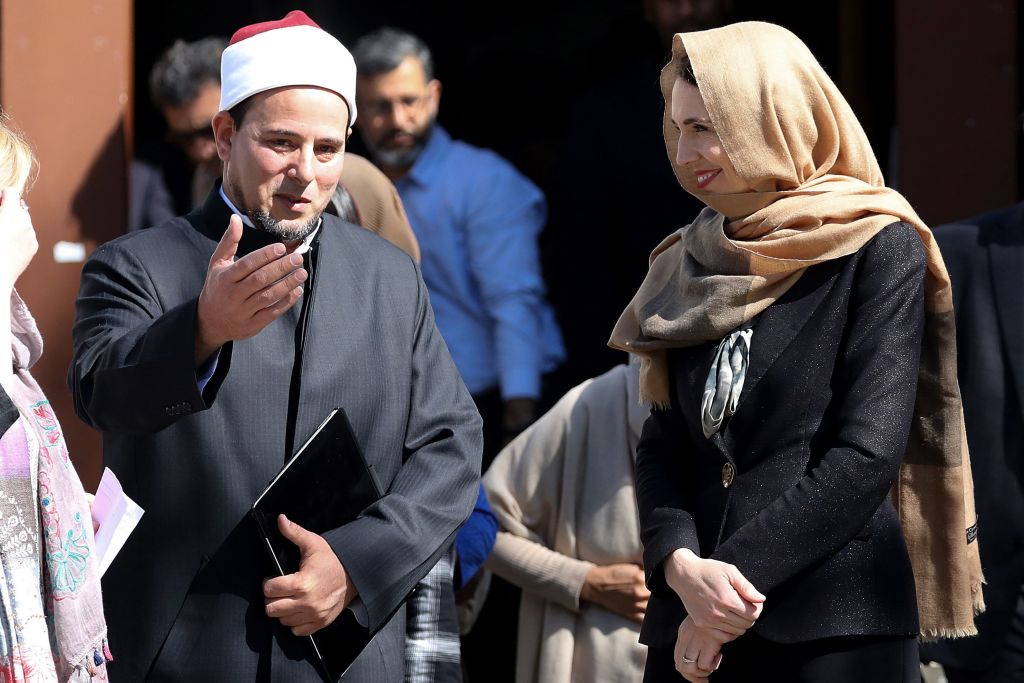Far-right extremism continues to rise across the Western world and over the past five years such attacks in North America, Western Europe and Oceania have increased by 250 per cent.
That is according to the 2020 Global Terrorism Index from the Institute for Economics and Peace, which each year summarises key global trends.
Its latest report was published on Wednesday.
The institute’s executive chairman Steve Killelea said while overall deaths from terrorism have hit a five-year low, new threats are emerging and far-right extremism is among them.
While he stressed the number of violent attacks remains relatively low in a global context, a number of fringe movements are gaining momentum, he said.
“If we are looking at the far-right, what we can find is that they are a combination of different groups. They can be neo-nazis, they can be anti-feminists, they could be ultra-nationalists, they could anti-gay and lesbian – so there are a number of different groups that get classified as far-right,” he told SBS News.
Threats from the far-right surge in Australia
On 15 March last year, an Australian terrorist opened fire on Muslim worshipers at two mosques in Christchurch, killing 51 people and injuring dozens of others in what was New Zealand’s worst mass shooting.
Leanne Close is the head of the counter-terrorism program at the Australian Strategic Policy Institute. She said what happened in Christchurch changed the “threat picture” in Australia.
“Prior to Christchurch, in particular, there was a small focus on right-wing extremism in Australia, but after the massacre happened, ASIO have reported there has been a 40 per cent increase in their investigations focused on right-wing extremism, so that has been a major shift.”
In September, Australia’s domestic intelligence agency ASIO revealed far-right extremists are increasingly occupying its resources.
In the latest Global Terrorism Index, Australia is ranked 74th out of 163 countries and the impact of terrorism in the country is classed as ‘low’. It came 71st in last year’s report.
Ms Close said the threat from Islamic extremism still exists but it has weakened partly because of the coronavirus pandemic. Right-wing extremist views though appear to be increasing, she said.
“We are certainly seeing a big influence online and on social media, coming from the USA in particular, also from Europe, encouraging and inciting people towards these really extreme views.
“And I’d say it’s really accelerated because of that access internationally, and I think also COVID, in some respects, because people are online, they’re looking at this material, they have that acceleration to extremist views or even conspiracy theories.”
Dr Mario Peucker from Victoria University specialises in the online and offline mobilisation of the radical right in Australia. He says while far-right extremism hasn’t necessarily grown in terms of size, it has become what he calls more “ideologically hardened” and “more determined” in recent years.
“This is part of a global development, as the index suggests,” he said.
“There are obviously a whole range of different reasons. What we’ve seen is after [Donald] Trump won the election four years ago, there was an increase in the Australian far-right, in American movements on the fringes, and Trump was seen as a figure for that and it certainly emboldened the narrative.”
“Another influence was the refugee intake in Europe in 2015. That brought that idea of ‘being overrun by non-white immigrants or refugees’ to the fore. Most recently, the discussions around the pandemic have also contributed to certain narratives that are prevalent within the far right.”
Concerns the pandemic could fuel extremism
The COVID-19 pandemic could see right-wing attacks continue to trend upwards, suggests the Global Terrorism Index. Mr Killelea said that is largely due to the ongoing economic downturn caused by COVID-19, which is likely to increase political and social instability.
“What will happen with the economic downturn, this is likely to increase a lot of economic hardship, and what we do notice with major downturns in economies that it increases the likelihood of more riots, demonstrations and political instability.
“So with these increased tensions, we think it may be a cause for an increase in some areas of terrorism and it may be associated with the far-right.”
The report notes that since the pandemic was declared in March, preliminary data suggests a decline in both incidents and deaths from terrorism in most regions in the world.
But despite an overall fall in the global impact of terrorism, it remains a significant and serious threat in many countries.
In Burkina Faso in West Africa, terrorism-related deaths rose by 590 per cent. Other countries to deteriorate substantially were Sri Lanka, Mozambique and Mali.
The report stresses the pandemic is likely to present new and distinct counter-terrorism challenges, therefore it is important that counter-terrorism initiatives are not curtailed because of the economic downturn.








